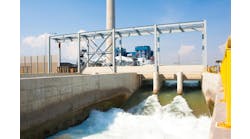To receive their Title V permits, many organizations dutifully outline how they monitor their processes and what controls they have in place to manage potential sources of noncompliance. There is a temporary sense of relief when the permit is issued. Those who must file Title V are shown in Table 1.
However, issuing a Title V permit is really only the beginning of a process. That process involves your ability to demonstrate ongoing compliance with the controls outlined in the application process: the conditions of ongoing compliance. You soon realize that effective data management is key to effective compliance. But you also realize that the enormous volumes of data involved threaten to make that task impossibly complex and time-consuming.
In this article, I’ll talk about successful approaches to Title V, focusing on data management and other practices you can put in place to manage clean air compliance.
While I will focus here on Title V, similar practices are necessary to effectively support other corporate compliance activities, including water, waste, health, and safety efforts mandated by the Superfund Amendments and Reauthorization Act (SARA), the Right-To-Know Act, the Toxic Release Inventory, the Resource Conservation Recovery Act, Hazardous and Solid Waste Act, and the National Pollutant Discharge Elimination System permitting program.
Step 1: start at the end
The first step toward Title V is to anticipate your compliance commitments and build a data management plan that supports them. The plan should closely reflect your approach to Compliance Certification Reporting and Deviation Reports (compliance reports). By this, I mean understand which data will be used to determine compliance, the required format of compliance reports, and how the data will be processed into the reports.
Title V did not create new regulatory requirements, but it did create new requirements for recordkeeping and reporting. Obviously, one result has been an enormous increase in data.
For example, a chemical manufacturer could have hundreds of obligations to meet for compliance with Title V. Some of these obligations might generate one or two data points per year while others produce hundreds per hour. All of this is compliance data. A line-by-line affirmative certification of permit conditions and regulatory obligations for a chemical company could require the review of hundreds of thousands of individual associated data points. And even this does not take into account the obligation to complete quality assurance checks on the monitoring and other equipment actually producing the data, all of which is reportable in the certification process.
The sheer volume creates a difficult dilemma for the compliance officer. How can I confidently certify compliance if I can't be confident that I’m even reviewing the right data?
One problem is that the difference between compliant data points and non-compliant data points isn’t necessarily obvious. Trouble spots are the potential deviations — and they may be buried within masses of other data. The solution is to get help filtering and sifting the data, and technology can provide that help.
Step 2: improve transparency
The key to successful compliance is to enable data to move freely within your organization and be acted upon. It’s vital to leverage existing systems such as work order systems, maintenance systems, existing ERP (Enterprise Resource Planning) or desktop systems. And you’ll need to find a technology solution that fits the size and scale of your operation. But it’s important to understand that technology cannot solve organizational gaps, and a culture of compliance also is critical.
The compliance process is dynamic and cyclical, and successful management is possible only when accountability structures are clear.
As a high-profile program, Title V provides for aggressive EPA or state agency enforcement. A chance violation on a routine, unannounced inspection can lead to much greater attention from regulatory agencies. Because of this, it is vitally important that relevant data and records hold together like a masterpiece. This must be clearly and regularly communicated across your organization, and demonstrated through ongoing testing and internal auditing and assessment procedures. Ultimately, the buck should stop at the facility management level, where there is the authority to enforce consequences and instill best practices.
A commitment to the development and maintenance of institutional knowledge also is very important. With an increasingly multitasked and mobile workforce, and with the growing prospect of retiring Baby Boomers, companies must retain critical compliance-related information.
Step 3: technology — only part of the answer
Employ a method to sift through the immense volumes of data. To solve the needle in a haystack problem of identifying potentially noncompliant data, sophisticated technology can help filter or sift the data. There are many technologies available to support compliance management. The options range in complexity, sophistication, and level of automation from desktop systems and spreadsheets to complex relational databases and enterprise systems.
Whatever path you take, the ultimate goal of applying technology is to eliminate silos of information, promote collaboration and automate, to the extent possible, compliance tasks. The ability to manage external regulatory content and the creation of reports also are key considerations.
However, it is important to remember that technology cannot “do” compliance. Technology allows people to meaningfully evaluate data. Not everything that might appear to be a problem from a database perspective is a problem from a compliance perspective. Technology sifts. People judge. Compliance is a human decision.
The bottom line is that data must be accessible and must be actionable, and technology helps provide that access and enable needed actions. For example, national companies operating in several states must report data in different formats for each state. In addition to translation into local formats, data must also be rolled-up for other corporate or business unit reporting purposes. Technology can enable efficient, effective approaches to addressing these and other requirements.
Step 4: staying current
Don’t wait until the reporting process to address potential deviations. Be aware that your jurisdiction may have a short-term deviation reporting requirement.
And this brings up the importance of foresight. I have a colleague who says that having a Title V permit is like calling the police after your commute home to confess that you were doing 60 mph in a 55 mph zone. And, while today you only need to report deviations on Title V, this may be a harbinger of what is to come in other areas of environmental health and safety (EH&S) compliance.
Add to this that Title V data, and all EH&S data for that matter, also may be required to demonstrate compliance with new and stringent financial reporting controls resulting from the Sarbanes-Oxley Act. As companies are required to identify all potential financial risk — including the risk of noncompliance — the pressure associated with managing compliance will only mount.
With the proper people, technology and processes in place, organizations can gain real value from self-policing. It is estimated that problems fixed proactively cost about 20% of those discovered by an outside agency. Eliminating reporting fire drills provides great power to organizations and has implications far beyond EH&S compliance activities. The ultimate goal — let’s call it “compliance nirvana” — is that organizations develop the capability to produce reports of any type at any time.
Step 5: learn how to play the game
The specter of noncompliance can weigh heavily on managers responsible for Title V. But awareness of common risks can help you avoid many problems. The most obvious categories of compliance risk are related to managing data, but there are other less obvious, and equally large, risks. These are usually rooted in misunderstanding Title V responsibilities or misaligning resources based on false assumptions.
Reporting late is one form of noncompliance. And here is where technology can help: Whether you use Microsoft Outlook, an existing work order management system, or a more robust compliance management solution, you can put reminders in place to ensure that this type of mistake doesn’t undermine corporate compliance.
Another common risk arises from misinterpretation of reporting requirements. In the early years of Title V enforcement, some managers failed to file reports because there were “no deviations.” The irony is that by not filing a report, these managers actually created a deviation.
One more common example of a risk relates to air emission limitations, particularly where companies don’t have a continuous emissions monitor (CEM) and choose to monitor process parameters instead. While monitoring process parameters is an entirely acceptable practice, it can create another type of compliance problem: the risk of over-compliance and misapplication of valuable internal resources. One company gathered emissions data every minute. If it went over the proscribed value for even one minute, the firm flagged it as noncompliant. In reality, its responsibility was to gauge performance based on average pounds per hour. Thus, the company was unnecessarily reporting deviations, and using valuable internal resources based on this over-interpretation. After an analysis and reconfiguration of their compliance process, it reduced 1,440 potential violations per day to 24.
Closing words of advice
If you’re responsible for managing Title V, review your processes to verify that you’re properly aligning technical, technological and human resources so that your best assets — your judgment and the judgment of all employees — are put to work. The benefits of streamlining data and process management include peace of mind and mitigated financial risk.
If you’re in the process of securing your Title V permit, anticipate the requirements and permit conditions, understand how you would report on them, and assign resources behind those tasks before you rush to certify.
Greg Gasperecz is vice president for environmental, health and safety at Enviance in Carlsbad, Calif. E-mail him at [email protected].

